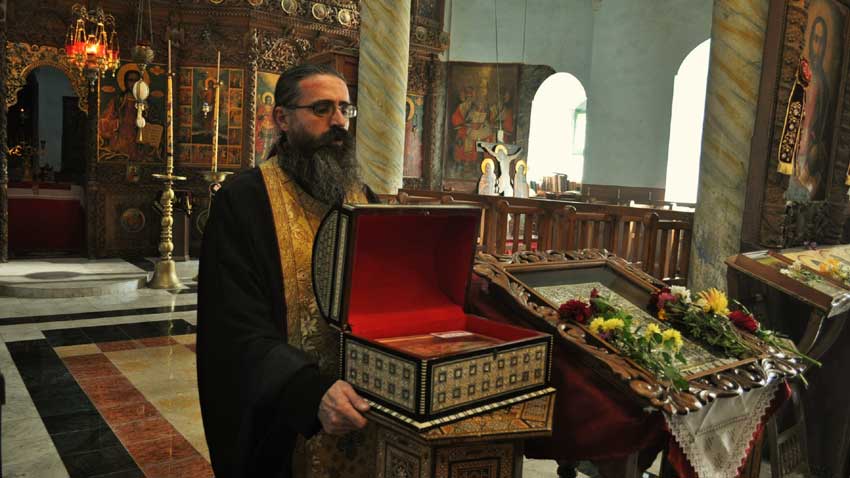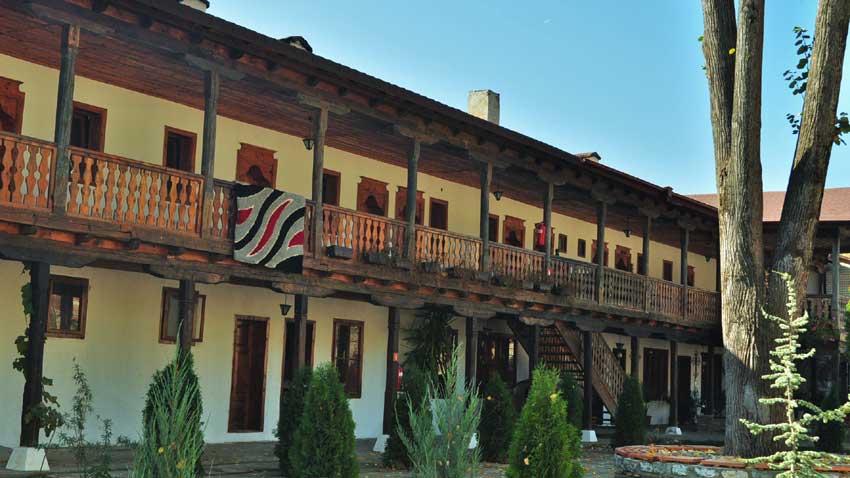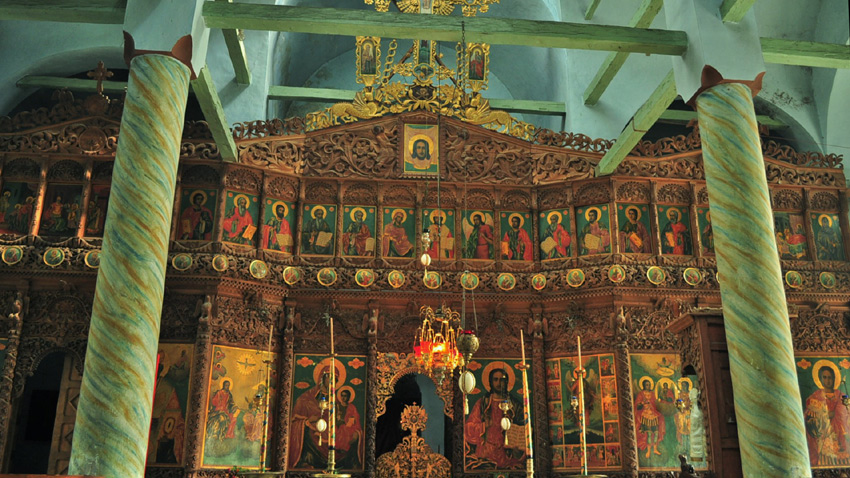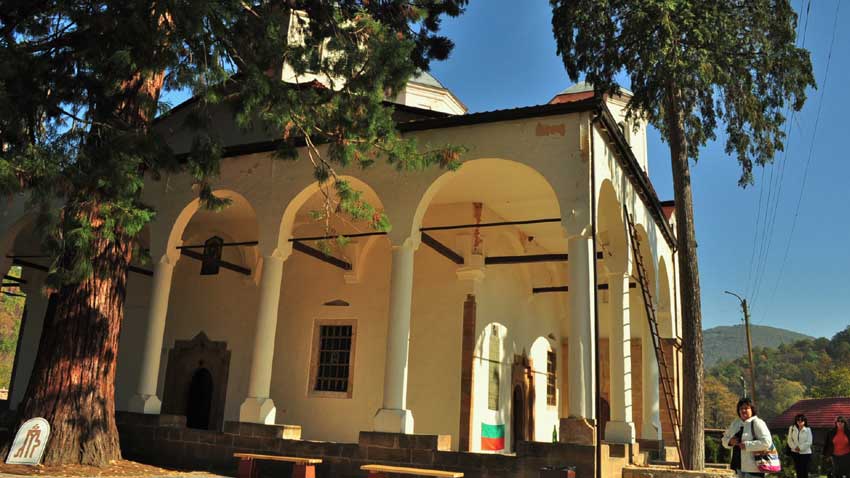In the Lopushna Monastery of Saint John the Forerunner you can live as a monk, even for a day, away from the temptations of the modern world. "This is a way to attract more people to the Christian faith" – says the abbot of the monastery, Christodoulos. It has turned out that there are a number of people who want to put on the clothes of a monk, even for a short while. But so far none of them has dared to permanently abandon secular life and start living in fasting and prayer.

Priest Christodoulos has not lost his hope. He admits that over the years some visitors stayed longer but sooner or later abandoned the hard road of a God’s servant. The monastery constantly welcomes visitors. Some of them are religious and some not. "In the tourist season a lot of people come, but it is difficult to say who the tourists are, because for us they are church-goers who came to the temple of God to light a candle," the abbot or the igumen as the title is known in the Eastern Orthodox countries, says. The history of Saint John the Forerunner Monastery was marked by a tragic event.

In the Middle Ages there was another monastery at this place, but during the Chiprovtsi Uprising /1688/ it was burned to the ground by the Ottoman oppressors. In the fire hundreds of women and children who sought refuge in the monastery died. "The blood of these martyrs has turned the monastery into a sanctuary for all Bulgarians because they did not betray their faith and will to have freedom," the priest says. For a long time the place was abandoned but in 1850 the locals started the construction of a new monastery. And a miracle happened. Among the ashes they discovered an icon of the Virgin Mary untouched by the fire and the centuries that had passed.
“God preserved the icon,” says igumen Christodoulos with excitement. “In order to protect it from the Turkish the then igumen ordered the icon to be cemented in the wall of the monastery church. The priest, however died soon and could not tell about the secret to the monks. The icon remained hidden from people for a long time. In 2013 a woman had a dream that the icon is in the wall. She called the monastery and described the exact location. That is how two years ago the miraculous icon was discovered again. It attracts hundreds of Christians and tourists. It has helped dozens of women have children, others manage to create families, and some are reunited and start living in peace and love," the igumen says.

St. Mary is the name of the monastery church, which is a smaller version of the church in the Rila Monastery. The icons in the church are the work of masters from Samokov. The church was built with donations from local people. The rich gave money and the poor - eggs. The artists needed the egg yolks for the paint, which has not faded at all over so many years.
Tourists are sometimes accommodated in the monastery. Families with children come for the weekend. There are special hotel rooms for them. However, these rooms are different than the asceticism of monastic life that few choose.
Priest Christodoulos says that people are afraid of the unknown, and that if they had at least a short opportunity to get acquainted with the life of the monk they could make the first step.
"We offer these people to get acquainted with the real life of a monk. They stay with us and attend morning service at dawn. They are present at weddings and christenings. They help us with the farm work but most of all they spend time in prayer. "

Some would-be monks spend 3-4 months in the monastery but then they leave it. "The everyday life of the servant of God is hard" - the abbot says and tells us how sometimes people come and think the monastery is a kind of sanatorium. "The monk, however, is a man devoted completely to God and he uses his personal time for prayers in his cell.
English: Alexander Markov
Photos: Veneta NikolovaIt is 131 years since the birth of Tsar Boris III, dubbed unifier. Boris Saxe-Coburg-Gotha found himself at the head of Bulgaria after the abdication of Tsar Ferdinand after the defeat of the country in World War I. The young monarch was crowned..
The ancient city Heraclea Sintica is among Bulgaria's most attractive tourist sites presented at international tourist exhibitions in Vienna and Stuttgart , Katya Stoyanova, head of the project "Restoration, conservation and socialization of Heraclea..
Archaeological excavations in the Kaleto district of the Bulgarian town of Lom situated on the Danube River have revealed remains of Roman defensive facilities dating back to the 1st century AD . Archaeologists prove that Lower Danube region..

+359 2 9336 661
